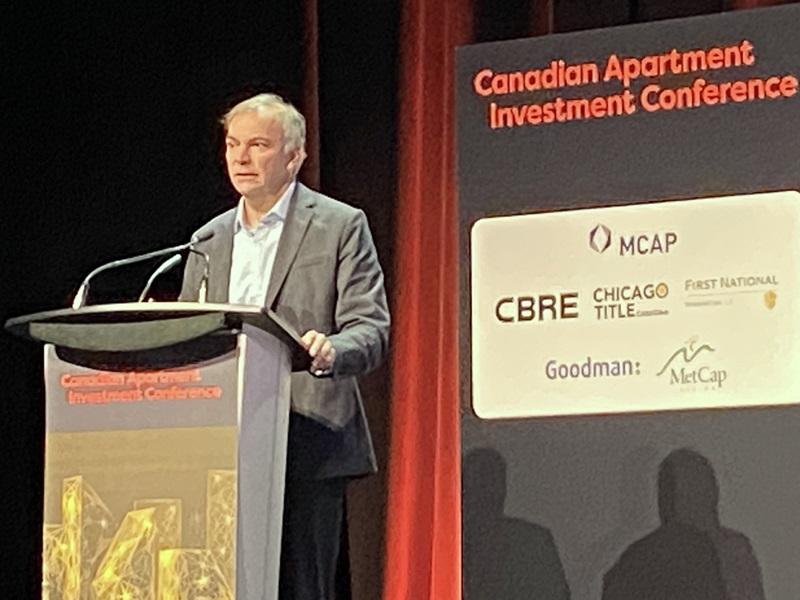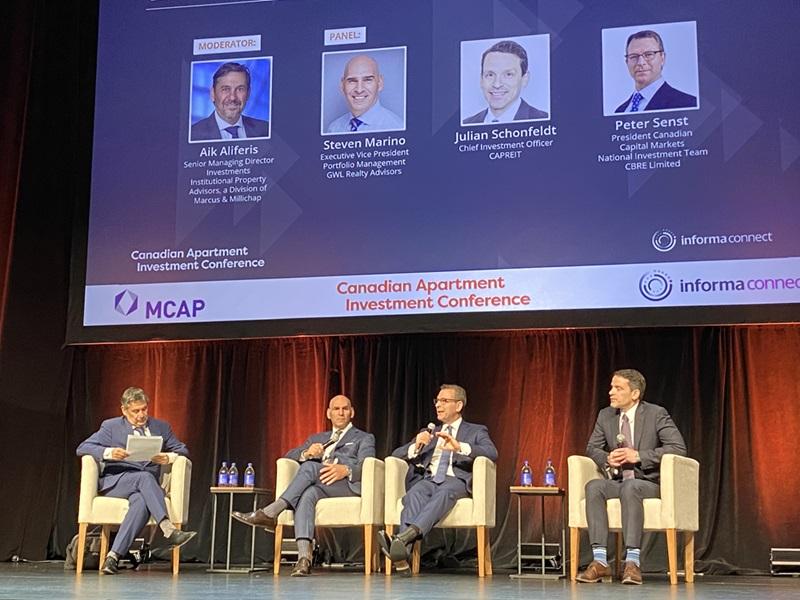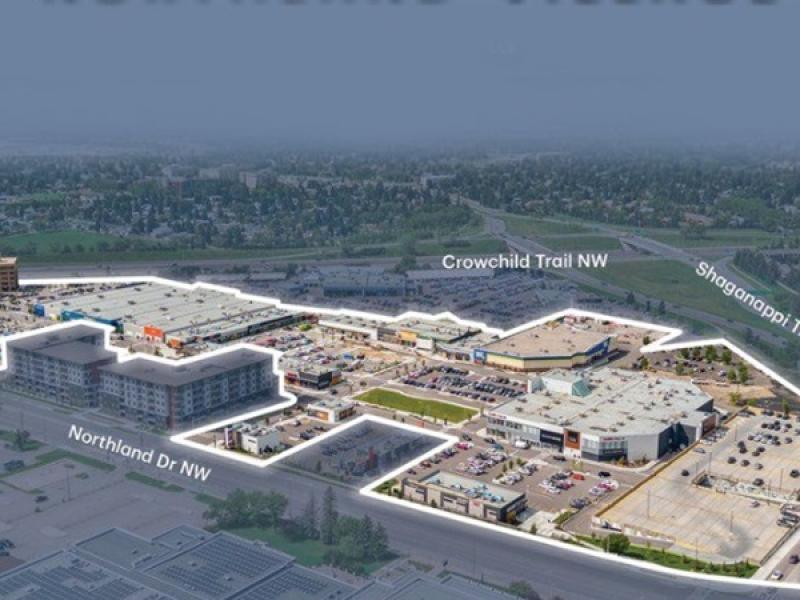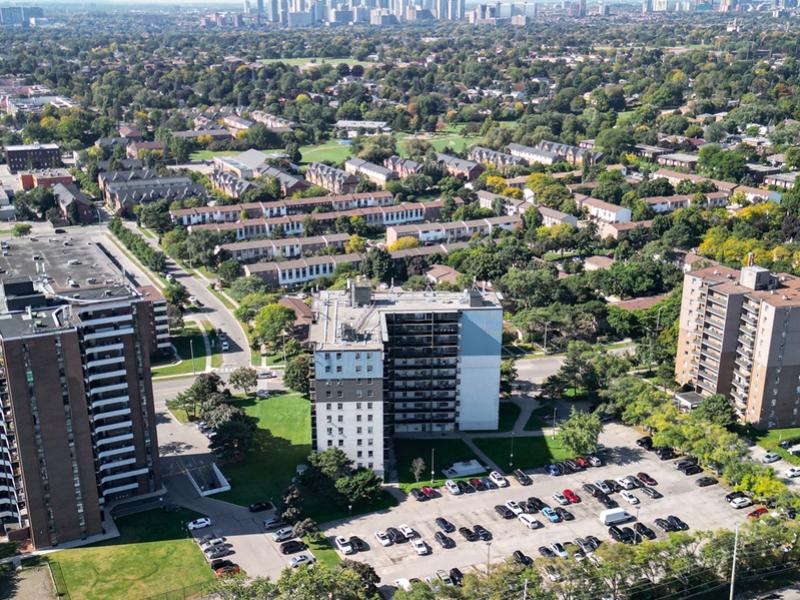
CIBC Capital Markets managing director and deputy chief economist Benjamin Tal will be pleased the Bank of Canada reduced its overnight interest rate to 2.5 per cent this week, but he told an audience at the Canadian Apartment Investment Conference (CAIC) a few days earlier rate cuts need to go deeper.
“I will not be surprised if, by mid-2026, the rate will be 100 basis points lower,” Tal said during the event at the Metro Toronto Convention Centre.
Tal went on to talk about population and said a one- to 1.5-per cent growth rate will be healthy for Canada and provide plenty of demand for real estate.
Tal believes the housing market is generally healthy in most parts of Canada but said the condominium markets in Toronto and Vancouver are in a deep recession.
“Purpose-built rentals are waking up, which is good, but it doesn’t mean that it’s sustainable,” Tal said. “We are building nothing.”
Once the market goes through the current glut of unsold condo inventory over the next couple of years due to price decreases for new and resale units, there will be little to satiate the demand for housing because of the lack of current development activity.
A new type of condominium market is needed
Tal thinks a new type of condo market will emerge when only large, well-capitalized developers remain and there’s more of a focus on making larger units for end-users instead of relying on investors to buy and rent small units, as has been the case for a long time.
Banks will have to take more risk, and requirements for 70- to 80-per cent pre-construction sales thresholds before releasing funds will have to end as part of creating a new condo market, according to Tal.
Tal is hopeful the federal government will resurrect the Multiple Unit Residential Building program, a tax provision introduced in 1974 that allowed individuals and corporations not in the real estate business to deduct losses created by capital cost allowances on rental property from non-rental income.
Tal would also like to see the GST removed for all purchasers of new homes, not just first-time buyers. He’s also lobbying for development charge reductions in order to spur more housing construction.
“We need to ignite demand to unfreeze supply,” Tal concluded. “The condo market will change and the purpose-built rental market will change.
“We need the support of governments and I'm very optimistic that 2026, with the help of lower interest rates, will be a much better year.”
Things seem to be on the upswing
Tal’s CAIC presentation was immediately followed by a panel discussion moderated by Institutional Property Advisors senior managing director of investments Aik Aliferis that examined the multiresidential investment market.
CBRE Canadian Capital Markets president Peter Senst said there’s anticipation conditions are improving for real estate transactions and institutions that moved away from the asset class will return and join private investors to increase bidding volumes and amounts heading into 2026.

Senst believes, however, there will be a similar bifurcation as seen in other asset classes with the highest quality properties in the best locations attracting the most interest. He also noted international investors are becoming more interested in Canadian assets as opposed to only looking at the United States.
CAPREIT chief investment officer Julian Schonfeldt agreed: “Things aren't quite as positive as they were back during COVID or pre-COVID, but it’s starting to feel like there's more interest in the processes we're participating in. We're seeing others bidding against us, whereas two years ago it felt like it was really just us at the table.”
“We now have multiple avenues we can pursue to divest an asset,” GWL Realty Advisors executive vice-president of portfolio management Steven Marino said. “You're seeing firm bids from time to time and you're seeing incredible buyers at the table.
“There are still lots of newer organizations that may not have the same credibility, and maybe 24 months ago we didn't have a choice but to consider taking a flyer to try to monetize it with a group that I'm not exactly sure how they're going to behave or act.
“Today, you've got a nice cross-section of investors who are looking at assets and lots of reliable, predictable capital is going to act in a very professional fashion.”
Deal sizes are increasing
Though some property valuations are lower due to market forces, Marino has seen an increase in deal sizes and noted $100-million-plus transactions are becoming more common.
“We were very progressive about writing things down and that's partly what helped us stay as liquid and active on the transaction side as we are now,” Marino said.
Aliferis added a lot of those large deals are now being done by private investors, which have been more active than institutions over the past few years.
Leading up to 2023, Marino said many institutional clients were pursuing build-to-core strategies — which carried a higher development execution risk. Now more desire to move into commodity product where there’s a deeper rental pool and more income resiliency and stability.
Schonfeldt said CAPREIT is still focusing on new construction acquisition opportunities to rebalance its portfolio and reduce its capital expenditure load. The trust’s portfolio is now comprised of about 80 per cent high-quality value-add product and 20 per cent newly constructed buildings, he added.
Like Tal, Aliferis wrapped up his session on an optimistic note.
“The fundamentals in the space are tremendous and the future in the space is tremendous, and that's why so much capital -- both private and institutional -- is going to drive to our multifamily sector,” Aliferis concluded.
“If rates go down, it's really going to help drive things. But the positivity and the quality of the multifamily space will continue. The resilience has been proven over and over again.”










